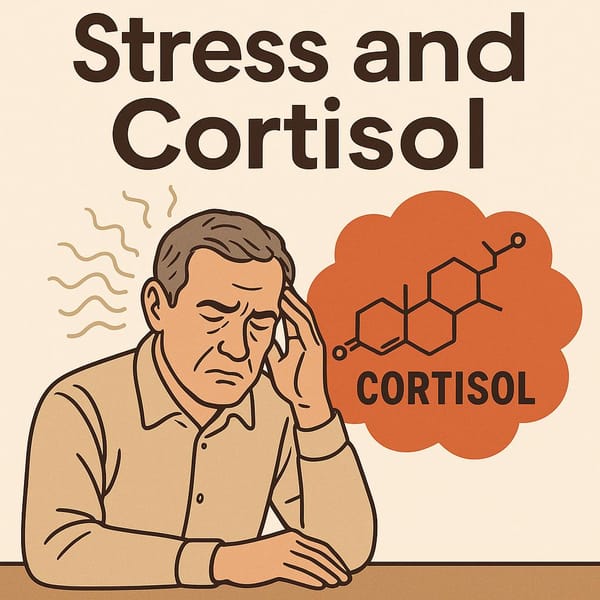How to Maintain Good Health Through Stretching: Tips for Flexibility and Injury Prevention
Stretching is a key component for overall health, especially for those over 50. It helps improve muscle and joint flexibility, reduces injury risk, and enhances overall quality of life.

Introduction
When it comes to health and fitness, many people think of intense workouts like running, weight lifting, or gym sessions. However, muscle strength alone isn’t always enough to protect you from injuries or aches, especially as you age. That’s where stretching comes in. Stretching is an essential aspect of a well-rounded fitness routine, particularly for individuals over 50 or those recovering from injuries. It keeps your joints and muscles flexible, helping reduce the risk of pain, while improving blood circulation and overall body function.
Yet, there are still misconceptions about stretching, such as assuming it can be done without warming up or believing it’s unnecessary. This article clarifies the importance of stretching, precautions to consider, and proper techniques to maximize its benefits.
1. Importance of Stretching
1.1 Injury Prevention
Stretching helps prepare muscles and joints for movement. When your muscles are flexible, you’re less likely to sustain injuries during physical activities—an especially critical point for those over 50, whose muscle mass and joint strength naturally begin to decline.
1.2 Enhanced Mobility
If you incorporate regular stretching into your routine, you’ll notice smoother, more fluid movements in daily tasks such as walking, getting up and down, or even household chores. This improved mobility significantly boosts long-term quality of life.
1.3 Stress Reduction
Stretching not only relaxes muscles but also eases tension in the brain and nervous system. Deep breathing during stretching activates the parasympathetic nervous system, promoting calmness and reducing stress hormones.
1.4 Improved Blood Circulation
Correct stretching techniques can enhance blood flow, delivering ample oxygen and nutrients to muscle cells. This plays a vital role in faster recovery after exercise or illness.
External Link (Reference): American College of Sports Medicine (ACSM) includes flexibility exercises as a fundamental part of a comprehensive fitness program.
2. Common Misconceptions About Stretching
2.1 No Need to Warm Up
A common misconception is that you can stretch right away without warming up first. This increases your risk of injury because your muscles and joints aren’t ready for the stress. Consider light warm-ups like brisk walking or gentle arm swings before stretching.
2.2 “No Pain, No Gain”
Some believe you must feel significant pain to reap the benefits. In reality, pain indicates you’re pushing too hard and risking muscle strain or injury. Aim for a slight tension or mild discomfort—pain means it’s time to ease up.
2.3 Only in the Morning or Before Bed
You can stretch any time of day. If you’re feeling sore or have been sitting for a while, even a quick stretching session can alleviate stiffness.
2.4 Limited Stretching Options
There are many stretching techniques. Besides static stretching, there’s also dynamic stretching (involving controlled movements) and advanced methods like PNF stretching. Understanding these options allows you to design a more effective stretching regimen.
3. Benefits of Stretching
3.1 Flexibility in Muscles and Joints
Flexibility is crucial for safe and efficient movement. As you age, staying limber can help reduce chronic pain and lower the risk of musculoskeletal disorders like office syndrome or persistent back pain.
3.2 Faster Recovery Post-Workout
Exercise often causes muscle tension and lactic acid buildup. Stretching afterward improves blood circulation, delivering oxygen and nutrients to fatigued muscles, speeding up recovery.
3.3 Better Muscle Balance
Imbalances—like stronger quadriceps and weaker hamstrings—can increase injury risk. Regular stretching helps maintain muscle equilibrium on opposing sides of a joint.
3.4 Enhanced Neuromuscular Coordination
Many stretches require coordination between nerves and muscles. Practicing proper stretching techniques can help prevent slips and falls, which is particularly beneficial for seniors.
3.5 Stress Relief and Improved Sleep
Stretching can activate the body’s relaxation response, easing tension and promoting better sleep quality. Adding 10–15 minutes of gentle stretching before bed may help with insomnia.
Tips: If you struggle with falling asleep at night, try incorporating light stretching beforehand.
4. Types of Stretching
4.1 Static Stretching
Hold a muscle in a stretched position for 15–30 seconds or more. Great for beginners and for post-workout cool-downs, as recommended by Mayo Clinic.
4.2 Dynamic Stretching
This involves movements such as arm swings or hip circles to gently stretch muscles and joints in a motion similar to the actual activity. Ideal for warm-ups before exercise.
4.3 Ballistic Stretching
Involves bouncing or jerky movements. While some athletes use it to improve speed and dynamic flexibility, it poses a higher risk of muscle tears and is generally unsuitable for most people, especially seniors.
4.4 PNF Stretching (Proprioceptive Neuromuscular Facilitation)
Often used in physical therapy, PNF involves alternating muscle contractions and relaxations to achieve a deeper stretch. Very effective but should be done under professional guidance.
Note: Start with safer methods like static and dynamic stretching, especially if you’re older or new to an exercise program.
5. Precautions
- Don’t Stretch Cold Muscles: Warm up lightly (e.g., a short walk) for 5–10 minutes before stretching.
- Avoid Overstretching: Stop if you feel pain. Mild tension is normal, but sharp pain is a red flag.
- Use Proper Form: If you have health conditions like osteoarthritis or a slipped disc, consult a healthcare professional first.
- Listen to Your Body: Discontinue any stretch that causes discomfort or pain.
- Consistency Over Intensity: Develop flexibility gradually; don’t rush into advanced stretches early on.
- Breathe: Avoid holding your breath; breathe steadily to reduce muscle tension.

6. Basic Stretching Exercises for the Entire Body
Here are key stretches that cover all major areas, from neck and shoulders to ankles, suitable for daily use.
6.1 Neck and Shoulder Stretches
- Lateral Neck Stretch
- Sit or stand upright with relaxed shoulders.
- Slowly tilt your head to the right, feeling the stretch on the left side of your neck.
- Use your right hand to gently assist the stretch if needed.
- Hold for 15–30 seconds; repeat on the other side.
- Shoulder Stretch
- Stand upright, clasp your hands behind you.
- Gently lift your hands upward, stretching the front of your shoulders.
- Hold for 15–30 seconds.
6.2 Upper and Lower Back Stretches
- Upper Back Stretch
- Stand or sit upright, clasp your hands in front of you.
- Extend your arms forward while slightly rounding the upper back.
- Hold for 15–30 seconds.
- Lower Back Stretch
- Sit on a chair or the floor, knees bent.
- Gently lean forward, wrapping your arms around your knees.
- Feel a stretch in your lower back and hold for 15–30 seconds.
6.3 Hip and Thigh Stretches
- Hip Flexor Stretch
- Kneel on one knee, place the other foot forward.
- Shift your hips forward slightly, feeling a stretch in the front of the hip.
- Hold for 15–30 seconds; switch sides.
- Quadriceps Stretch
- Stand upright, hold onto a wall for balance.
- Bend one knee, bringing your foot toward your glutes.
- Feel the stretch in the front of your thigh; hold for 15–30 seconds. Switch sides.
- Hamstring Stretch
- Sit on the floor, one leg extended, the other leg slightly bent out to the side.
- Gently lean forward, aiming to touch your toes or shin.
- Hold for 15–30 seconds; repeat on the other side.
6.4 Calf and Ankle Stretches
- Calf Stretch
- Stand facing a wall, one foot forward, one foot back.
- Lean forward, keeping the back leg straight and heel on the ground.
- Hold for 15–30 seconds; switch sides.
- Ankle Rotation
- Sit or stand, lifting one foot slightly off the ground.
- Rotate the ankle in a circular motion for 5–10 rotations in each direction.
Additional Tip: Pay attention to how your body responds. Stop or adjust if you feel any discomfort.
Conclusion
Stretching isn’t just a cool-down or a mere remedy for muscle aches. It’s an essential part of maintaining overall health, especially for individuals over 50 as joint and bone structures naturally weaken over time. By incorporating proper stretching into your daily routine, you can help reduce injuries, alleviate soreness, and enhance your overall well-being. Plus, stretching benefits circulatory and nervous systems, promotes muscular balance, and lowers stress levels.
If you want a holistic approach to health, prioritize stretching—whether before and after a workout, or simply during the day. Always heed your body’s signals, be patient with your progress, and practice regularly. You’ll soon find that investing in flexibility pays off with increased vitality and a better quality of life.
Disclaimer: This article is for informational purposes only and does not aim to diagnose or treat any condition. If you experience persistent pain or have specific health concerns, consult a healthcare professional.
We hope this article helps you see the importance of stretching and inspires you to prioritize your health at every age. For more information on workouts suitable for those 50 and older or other exercise tips, check out our other posts!



